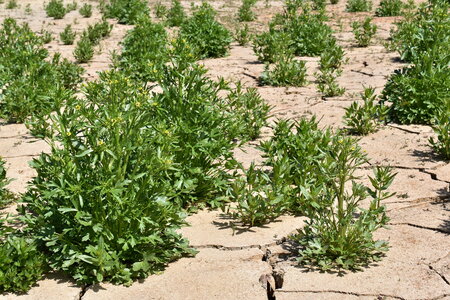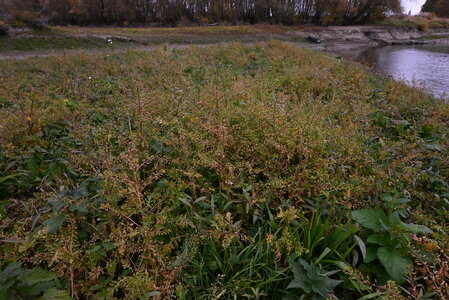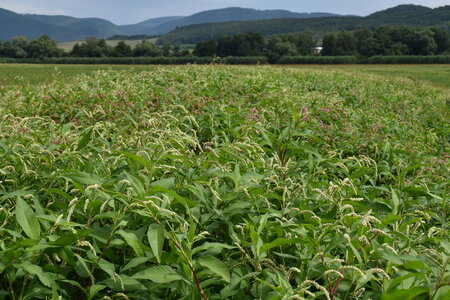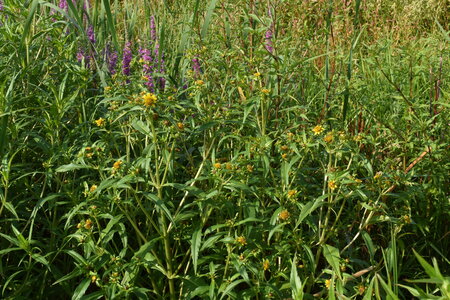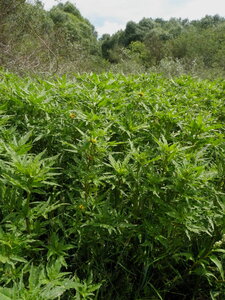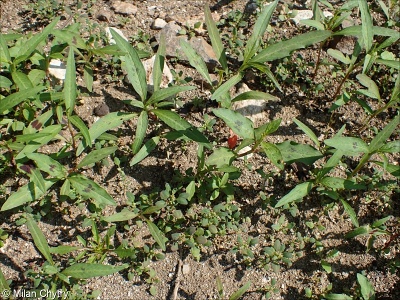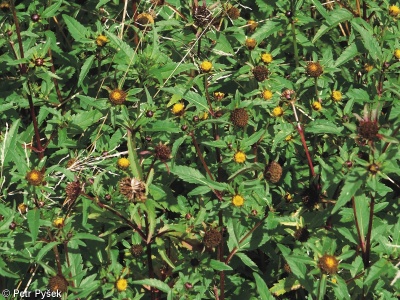Q61 Periodically exposed shore with stable, eutrophic sediments with pioneer or ephemeral vegetation
This habitat includes periodically exposed shores of rivers or islets of accumulated sediment in river channels, drying out oxbows, lakes and fishponds. Similar environmental conditions occur in ditches, wet places in villages or shallowly inundated and drying out arable land. Soils are muddy or sandy-muddy, usually with a high concentration of nutrients from natural sedimentation or human input. Vegetation is dominated by annual herbs, mainly of the genera Bidens, Chenopodium and Persicaria. In the Mediterranean areas where the drying out is faster, the vegetation can also be dominated by perennial stoloniferous species tolerant to prolonged flooding. In contrast to habitat Q62, this habitat occurs at sites with quick draw-down and drying out or on more nutrient-rich sediments.
Chytrý M., Tichý L., Hennekens S.M., Knollová I., Janssen J.A.M., Rodwell J.S. … Schaminée J.H.J. (2020) EUNIS Habitat Classification: expert system, characteristic species combinations and distribution maps of European habitats. Applied Vegetation Science 23: 648–675. https://doi.org/10.1111/avsc.12519
Version 2021-06-01, https://doi.org/10.5281/zenodo.4812736.
For the official presentation of the EUNIS Habitat Classification from the European Environment Agency, please see: EUNIS Terrestrial Habitat Classification 2021. The FloraVeg.EU presentation may show modifications and partial updates to the habitat classification.


